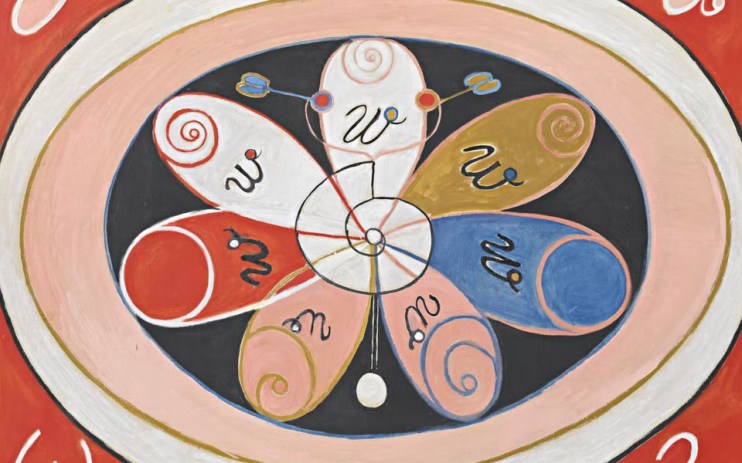Mondrian and af Kilnt at the Tate Modern: Myriad mystical musings

What a strange time it must have been to have lived through the discovery of radio waves and x-rays and radiation, to one day be told that an invisible, inscrutable world exists alongside the one you know, hitherto unnoticed, exerting a powerful, unknowable influence.
The late 1800s were a time when spirituality and science seemed to intersect, when the occult momentarily bled into the ordinary: who was to say what these new forces represented? Perhaps God – or gods, or something else – existed within them. If only one could better understand this world, who knows what they might see?
This is the story the Tate Modern tells through its dual exhibition of Piet Mondrian and Hilda af Klint, bringing together two distinct artists with two distinct bodies of work that developed with an uncanny synchronicity.
The first thing that really grips you is a series of works by Swedish artist af Klint. Rows of paintings take up an entire wall, each one resembling a strange scientific diagram: spirals and shells, Vitruvian men and women, religious symbols, repeated slogans.
They are among 193 paintings that af Klint said were commissioned by a spiritual guide who existed on a higher plane of consciousness, with whom she would commune. Through these paintings she attempted to develop a language by which to understand the forces that bind us, and to chart humanity’s evolution towards enlightenment.
Mondrian, a fellow member of the spiritual Theosophy movement, is less commonly associated with such mysticism. Indeed, his most famous works – those “neo-plastic” black and white grids peppered by splashes of colour – have been stripped of much of their meaning through sheer repetition (there were two women wearing Mondrian-print dresses when I was there, taking selfies beside the corresponding works). But his paintings were a similar attempt to reduce the natural world to a pictorial language, stripping almost everything away to see the fundamentals that remain.
Dual exhibitions like this can often feel stuffy and academic, art historical thought experiments rather than crowd-pleasing shows. But the Tate’s curators have really captured a sense of two minds grasping for understanding at a time of seismic change. Throughout their careers both artists moved from the naturalistic to the expressive – from landscapes to botanical drawings to impressionistic lines and swirls.
The Tate has also brought together some incredible works that are absolutely worth seeing even if the mysticism the exhibition is couched in leaves you cold; some of the Mondrians are worth the price of admission alone.
But drinking the Kool-Aid is part of the fun – at a time when artificial intelligence promises to change the way we see the world all over again, it’s fascinating to see so many striking works that attempt to understand the world that was just coming into focus 100 years ago.
